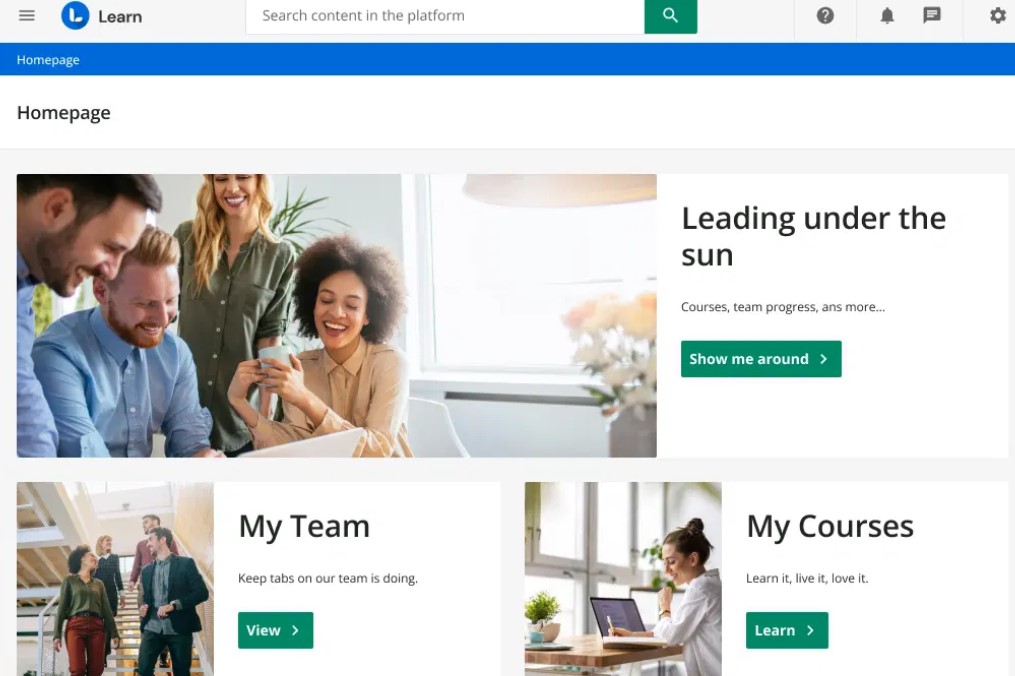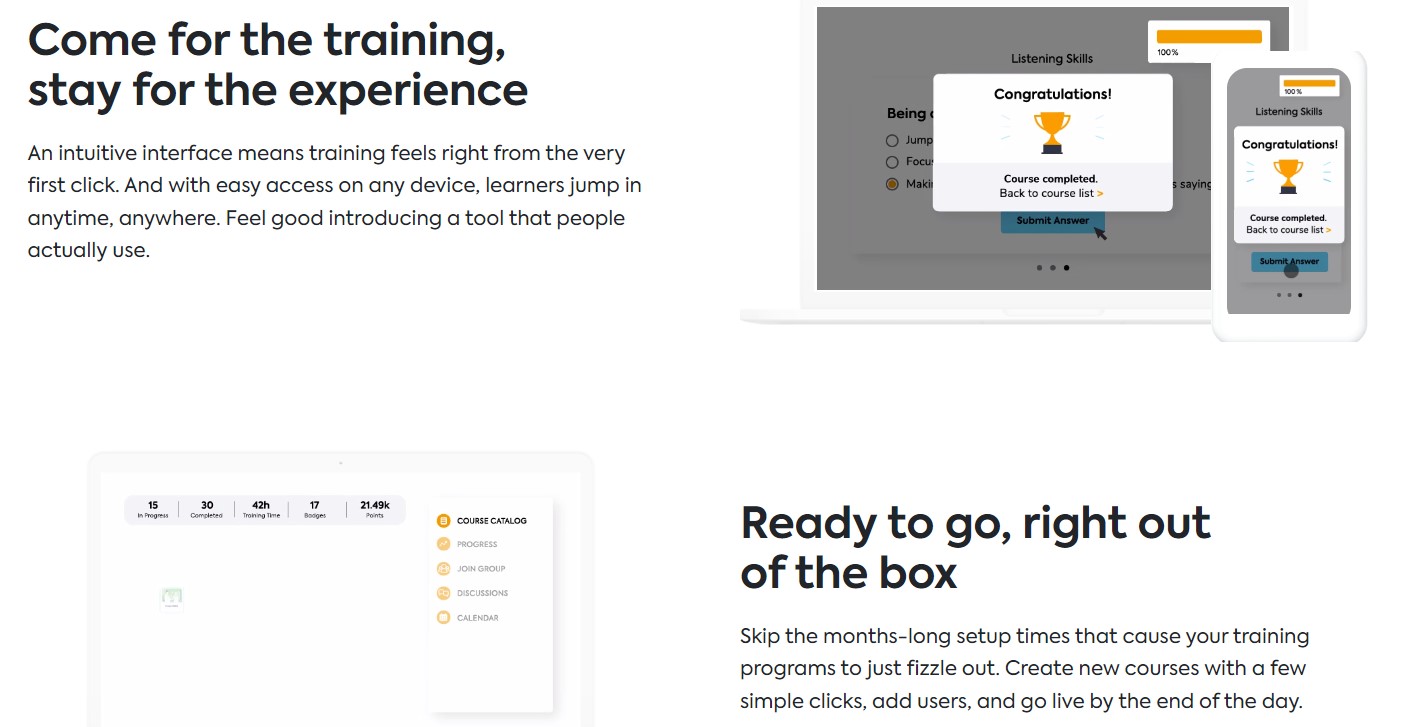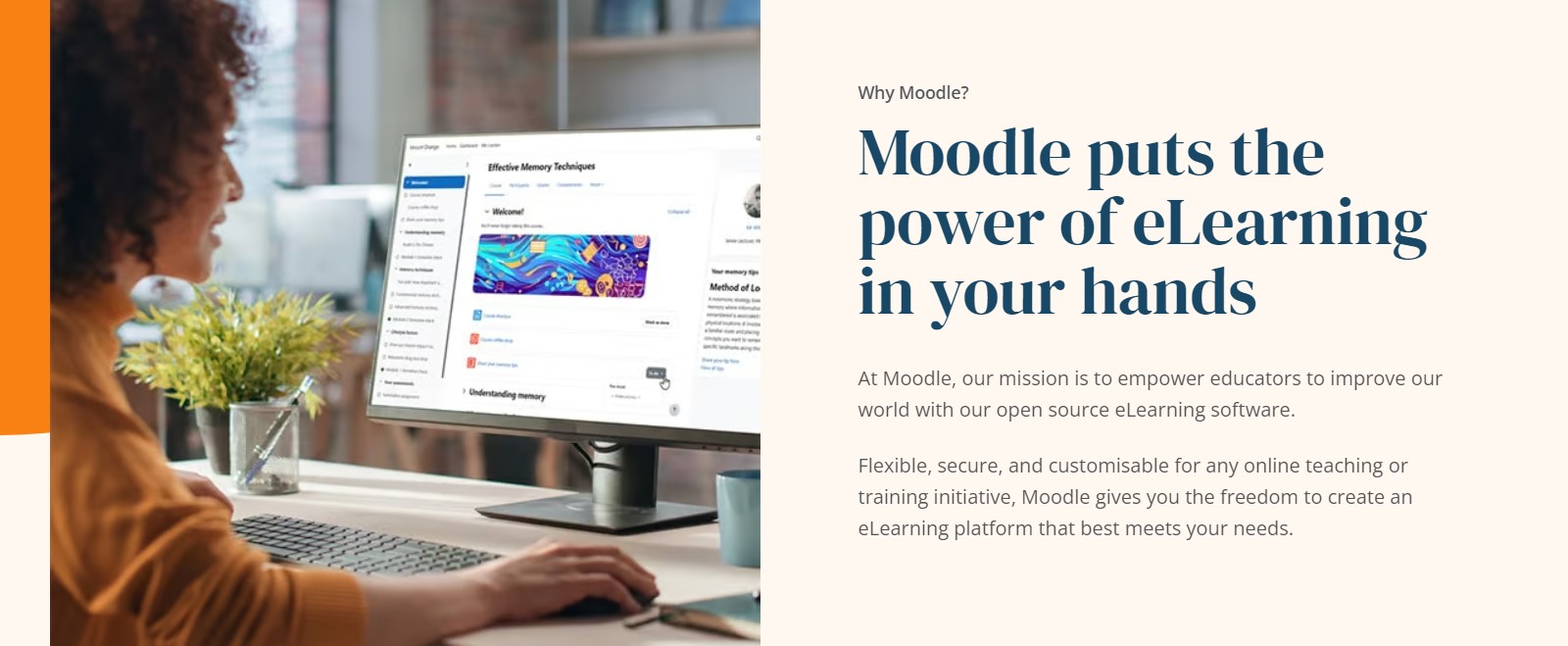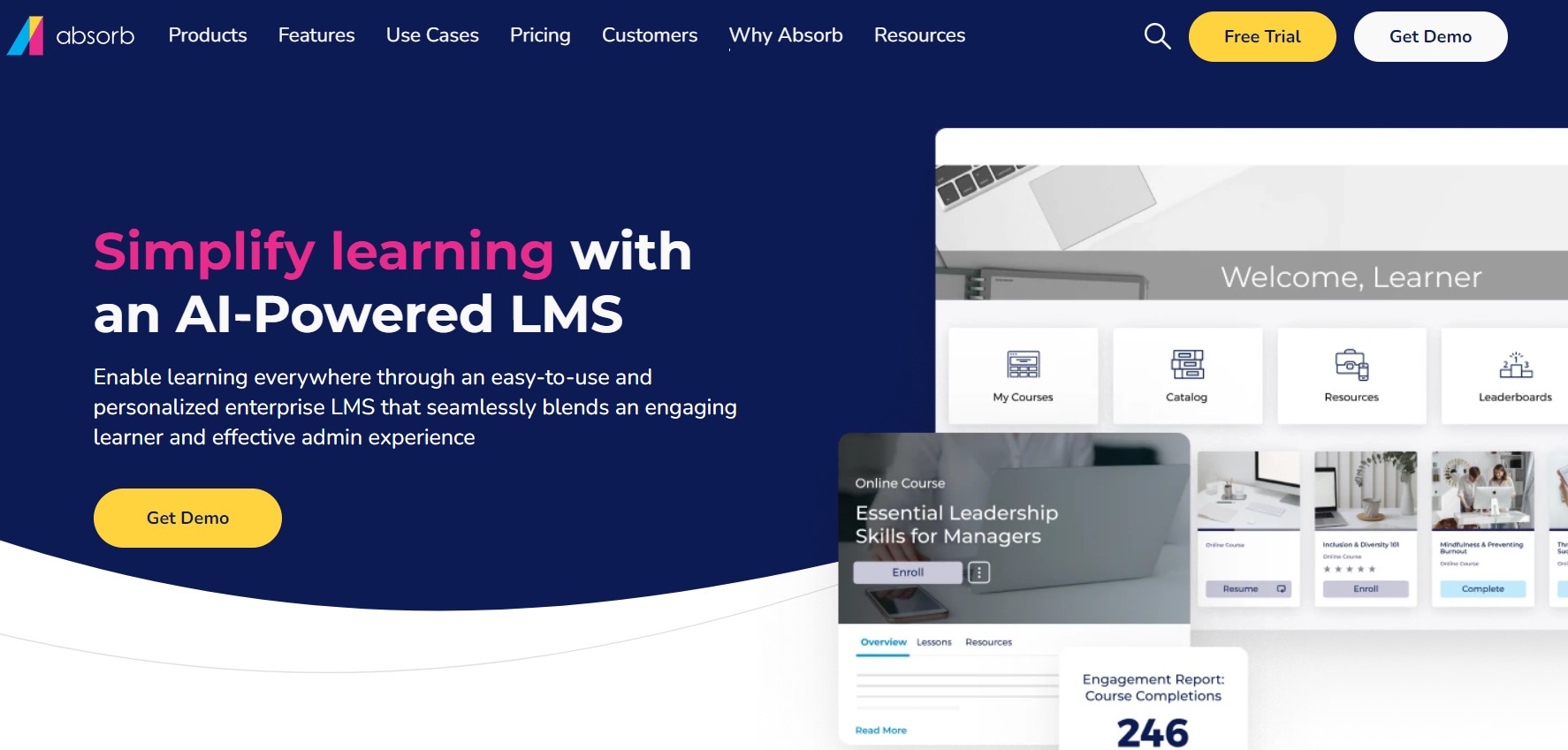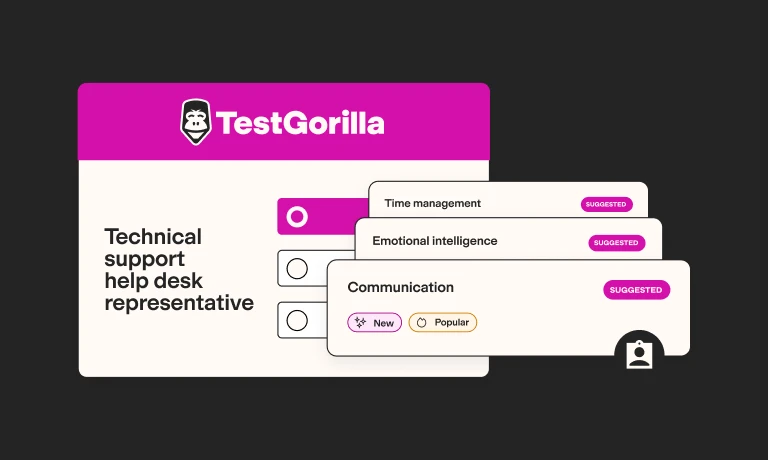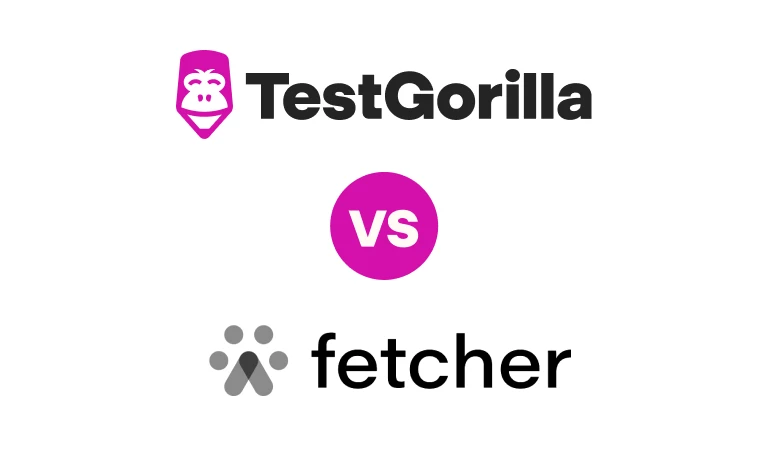Learning management systems: A guide for HR professionals building a culture of development
A study by Culture Amp shows that 54% of immediate employee retention stems from companies demonstrating an investment in employee development.[1]
The responsibility for constructing these development programs often falls on HR leaders – but with so many duties to juggle, they aren’t always able to devote enough time to the task.
Learning management systems offer a solution to the problem by serving as a central repository for an organization’s training and development initiatives, which employees can access on their own at any time.
This HR technology has emerged as an irreplaceable tool in an environment where learning and development stands atop many employees’ priorities.
In this piece, we cover the importance of a learning management system, some good examples of this software, and how you can get started implementing this system in your organization, including integrating talent assessments.
Table of contents
- What is a learning management system?
- Why is a learning management system important to HR professionals?
- The benefits of learning management systems
- 5 best learning management system examples
- 5 best practices for leveraging LMS software in your HR department
- 3 examples of companies succeeding with learning management systems
- Build a culture of growth with learning management systems
- Learning management systems FAQs
What is a learning management system?
A learning management system (LMS) is a software or web-based application designed to organize, plan, and deliver e-learning to employees and business owners.
The best learning management systems serve as a centralized digital tool housing all course content, training materials, quizzes, student progress, and discussion boards, making them a key pillar of your HR tech stack.
An LMS also offers visualizations of your learners’ progress and development, enabling you to see the effectiveness of your programs and make the necessary adjustments if something isn’t working to your liking.
Finally, many of the top learning management systems let you construct specific programs for your workers, such as an onboarding program or a course for salespeople, or compliance training for roles that require it. This ensures a consistent structure for your team members, so they always know what their next step is.
Why is a learning management system important to HR professionals?
LMS software organizes and facilitates employee development plans by ensuring that employees have the learning and development they need to progress at their own pace.
Providing this to your employees isn’t just something that’s nice to have; it’s a necessity. SHRM's Workplace Learning and Development Trends Report reveals that growth and development opportunities are a primary deciding factor in the job search for 46% of the workforce.[2]
Utilizing an LMS within your organization shows top candidates that you’re dedicated to helping them develop, but it’s not just about attracting talent – it’s about keeping them around, too.
According to LinkedIn's Workplace Learning Report, 94% of employees say they would stay longer with a company invested in their growth.[3] This makes learning management software a key asset in preventing voluntary turnover.
But from an employer’s perspective, it’s important that these learning initiatives do more than just contribute to employees’ personal growth – they must help your company grow as well. The top learning management systems help employers align learning opportunities with the objectives of their organization by structuring development programs that aim to address skills gaps and develop leaders.
The best insights on HR and recruitment, delivered to your inbox.
Biweekly updates. No spam. Unsubscribe any time.
The benefits of learning management systems
In addition to attracting and retaining talent, here are some of the concrete benefits of learning management systems within an organization:
1. Improves training effectiveness
When employees feel that their training pertains to their specific role, they’re more likely to have success with it.
A study from Scientific Research Publishing shows that employees experience greater knowledge retention through active learning, which is a staple of LMS training programs.
However, not every person learns the same way. Learning management systems let you provide a variety of different learning methods for your employees.
Catering to various learning styles and needs can dramatically increase learner engagement and completion rates.
2. Increases HR productivity
An LMS boosts HR productivity by automating certain training-related tasks. Besides creating training programs and course material, these systems excel in administrative functions like report generation.
This HR automation enables professionals to focus more on analyzing and implementing results instead of planning and coordinating tests and training.
The structured and consistent approach offered by LMS makes it easier for HR to develop employee training programs and analyze performance as well. By reducing manual workload and enhancing efficiency, LMS enables HR teams to allocate time and resources more effectively, leading to increased productivity in HR functions.
3. Enables easy scaling
Scalability is a crucial feature to consider when choosing an LMS because as your organization grows, your training and development needs to grow with it.
An LMS accommodates an increasing number of learners using employee self-service portals, diverse training, and uniformity across different departments.
You risk losing tenured employees if your training and development programs are not properly scaling with your business. This adaptability is not just a convenience; it’s an essential strategy for employee retention and organizational growth.
4. Boosts visibility into employee development progress
Onboarding and training isn’t a “set it and forget it” process; you should follow up and see how your employees are developing to learn what you can do to improve.
By having a centralized and organized training management process, you’re able to automatically track employee development, develop an internal recruitment process, and see how your training is received.
This data is invaluable for HR managers who want to align their organizational goals with employees' professional development aspirations.
You can ensure you’re making relevant training available to employees who want it. This creates a culture of continuous learning and development where employees feel valued, and your business reaps the rewards.
5 best learning management system examples
Now, let’s take a look at some of the LMS (learning management systems) you can implement in your business to improve the way you train and develop your employees.
Factors we considered
Here are the factors we considered among many when choosing the top learning management systems.
User experience: Ensure the LMS features a user-friendly and intuitive interface for learners and administrators.
Features: Learning management systems should offer a wealth of online courses and training programs. The best also include authoring tools (for course creation), excellent tracking and reporting, gamification, and peer learning.
Customization: The learning tools should be adaptable to your organization's specific needs and personalized enough so each employee feels that the training is exclusive and meaningful to their role.
Scalability: The LMS should be capable of scaling effectively no matter how much the company grows, enabling an increasing number of users.
Integrations: The best LMS should integrate seamlessly with your existing systems. This makes it easier to keep things organized for your employees, access your learning programs, and act on HR technology trends.
Mobile accessibility: A mobile-friendly LMS is crucial for on-the-go access for busy professionals. All of the LMS vendors here offer some form of mobile dashboard for smartphones.
Summary of best learning management systems
LMS Example | Summary |
Docebo | - Best for automation - High customization - AI features - Customer education platform |
TalentLMS | - Best for small- to medium-sized businesses - Cost-effective - Easy to deploy and use - Built-in gamification |
Moodle | Best for nonprofits - Open source - Great community support - Good accessibility features |
Blackboard | - Best for comprehensive features - Strong assessment center - Highly scalable |
Absorb LMS | - Best for large teams - Scalable and flexible - Strong analytics - Comprehensive features |
Docebo: Best for automation
Docebo is renowned for its AI-powered learning management software. It provides a personalized digital learning experience, leveraging machine learning to recommend training content, automate administrative tasks, and facilitate learner engagement.
Docebo integrates onboarding software into its LMS. This not only saves your HR team time on training new hires but also shows your employees your organization’s emphasis on learning from the get-go.
One extra unique feature of Docebo is its customer education platform. Similar to your employee education efforts, this training feature that shows how to use your product can help boost customer engagement and retention.
Pros | Cons |
- High customization - Packed with AI features - Intuitive interface - Great reporting capabilities - Training programs and certifications in a wide range of fields (i.e., PMI/PMP, CompTIA, Microsoft, HRCI, Six Sigma) | - Too complex for small organizations - High cost - Steep learning curve |
Rating: 4.3 out of five, 526 reviews (G2)
Pricing at time of writing: Contact sales for pricing
TalentLMS: Best for small- to medium-sized businesses
TalentLMS is an easy-to-use, versatile LMS ideal for smaller teams.
It prioritizes the employee experience, making it easy to pick up even for teams who may not be highly tech-savvy.
TalentLMS is designed to be ready to go as soon as it’s installed, so it’s a good choice for small businesses looking to develop and deploy training quickly and efficiently without having to soak up too many resources. You can easily drag and drop videos or other media for quick content creation.
It also incorporates employee recognition, helping to keep your employees engaged and motivated with their learning through gamification elements.
Pros | Cons |
- User-friendly - Cost-effective - Easy to introduce to teams of varying tech skill levels | - Limited customization and integrations - Lacks advanced features |
Rating: 4.5 out of five, 695 reviews (G2)
Pricing at time of writing: From $59 per month for up to 40 users
Moodle: Best for nonprofits
Moodle is an open-source LMS widely used in educational institutions and nonprofits. Known for its flexibility and scalability, it enables organizations to create customized learning experiences with its modules.
Because it’s open-source, it has a large community for support and plugins, many of which utilize AI in HR. This makes it easily tailorable for your specific needs, though it can require an extra layer of technical knowledge.
Moodle is one of the best options in this list for accessibility features, too. Not only does it have a mobile app and both online and offline access to courses, but it also has text-to-speech technology and a content accessibility checker, with further accessibility options available through plugins.
Pros | Cons |
- Most customizable of any option due to its open-source nature - Large community support and training - High accessibility | - Requires technical expertise for setup and customization - The user interface is less modern compared with other LMS platforms |
Rating: 4.1 out of five, 387 reviews (G2)
Pricing at time of writing: Contact sales for pricing
Blackboard: Best for comprehensive features
Blackboard is a comprehensive LMS often used by higher education institutions. It provides a comprehensive grading center where you can organize and manage each employee's performance in a centralized location.
This LMS provides users with excellent analytics and insight into their learners’ development, enabling HR leaders to verify the effectiveness of their initiatives and adjust accordingly. It also features talent assessment integration.
Like Moodle, Blackboard features an open architecture, so you can tailor the learning platform to fit your exact needs.
Pros | Cons |
- A comprehensive set of features designed for in-depth learning - Strong assessment and grading center great for organizing large batches of tests - A wide range of integrations and flexibility makes scaling easy | - High cost - The complex interface can be overwhelming |
Rating: 3.9 out of five, 832 reviews (G2)
Pricing at time of writing: From $300 per year
Absorb LMS: Best for large teams
Absorb LMS is a cloud-based learning platform designed for large corporations. It stands out for its clean interface and robust functionality that includes a built-in course library, advanced reporting, and a learner engagement tool kit.
Absorb LMS contains many of the best features from the other learning management systems above, including onboarding, customer education, and AI support. As expected, this full suite of features makes its price tag a bit higher than other options, meaning it may not be the best choice for smaller businesses.
It also has great integrations, including integration with HRIS systems such as BambooHR, helping HR teams build an all-in-one software platform.
Pros | Cons |
- User-friendly interface with a modern design - Scalable and flexible for various corporate training needs - Strong HR reporting and analytics capabilities | - Pricing can be on the higher side for smaller businesses - Some users may find customization options limited |
Rating: 4.7 out of five, 353 reviews (G2)
Pricing at time of writing: One-time licensing fee of $800, contact sales for full pricing
5 best practices for leveraging LMS software in your HR department
Now that you understand the importance of learning management systems and have options to choose from, you’re ready to learn how to implement them.
Here are five best practices for making the most of your LMS software.
Best practices for implementing LMS software
Best practice | Summary |
1. Use a variety of learning methods | Cater to different learning styles and preferences using methods such as microlearning, mobile learning, social learning, and full courses |
2. Leverage gamification | Make the learning process fun by incorporating points, badges, and leaderboards, which increases engagement and knowledge retention |
3. Monitor employee development with talent assessments | Utilize regular assessments with your LMS to track progress and align training with employee skills and job requirements |
4. Personalize the learner experience | Customize learning paths according to individual career goals and preferences, enhancing relevance for your employees |
5. Train employees on LMS usage and benefits | Provide comprehensive training on your LMS to ensure effective use |
1. Use a variety of learning methods
Diverse learning methods enable you to cater to different styles, schedules, and preferences.
By offering different formats like microlearning, mobile learning, social learning, and full in-person coursework, your workforce can choose the option that works best for them, making them more likely to utilize the LMS and enhancing its efficiency in the process.
Microlearning, for instance, offers short, focused content on specific tasks, preventing employees from feeling overwhelmed. According to research, 71% of professionals recognize microlearning’s potential for knowledge retention.[4]
Mobile learning enables employees to learn at their own pace and location, and full courses cater to those who prefer immersive, hands-on learning experiences.
Meanwhile, for social learners who learn best from interacting with others, you can implement real-time discussion forums, schedule video conferencing learning sessions, or include instructor-led training.
Continually adapting and expanding learning methods based on trends and feedback ensures the LMS remains effective for all types of learners.
2. Leverage gamification to increase engagement and knowledge retention
Gamification in HR means incorporating game-like elements into your learning materials and development programs.
Gamification transforms learning from a chore into a fun and even competitive experience, making it more enjoyable for your workers. Employees more willing to train yield better results, according to a Harvard Business Review study on gamification in the workplace.[5]
Incorporate points, badges, and leaderboards in your LMS – some come with these gamification features built-in, or you may have to develop your own system.
To further incentivize competency development among your workforce, you might offer rewards for your top rankers; for example, buying lunch for the person who has the most badges in a given quarter or giving company swag to those who reach a certain milestone, like completing 10 courses.
3. Monitor employee development progress with talent assessments
It’s important that you’re not providing education and training without the intent to develop that employee and follow up on their progress – otherwise, the growth opportunities you’re presenting come off as mere posturing.
As an employer, you also need to be able to verify that your LMS is achieving the results you want.
The best way to do this is by using talent assessments as part of employee training and development to get a direct gauge of your employees’ skills.
Maybe you’re a digital marketing team looking to develop stronger SEO skills in your employees. You give the SEO Outreach test to your team and record their results on the test before and after having them take an SEO training program in your LMS.
When the grades come back, you see an average improvement of 20 points on the quizzes. You can take that info to company leaders and shareholders to get more buy-in on your learning opportunities.
Many LMS, such as Blackboard, feature talent assessment integration. If yours does not, you can use a performance management system alongside your LMS to provide consistent training and assessments while comparing results and identifying skills gaps, hiring needs, and areas of improvement.
4. Personalize the learner experience
Personalized learning experiences are more relevant and engaging, leading to efficient learning and quicker skill acquisition.
A study by Axonify found that 91% of employees desire a personalized training program that aligns with their career path and goals.
Employees don’t necessarily want to train simply because a job requires it or their employer says they have to. There should be a connection between the training and their individual goals.
You can achieve this by sitting down with your employees to craft a professional development plan. Ask them where they want to be with their career in the future and work out the steps they need to take to get there from their current position.
This way, you can direct them to learning content within the LMS that can help them achieve their goals, making the process much more personally meaningful for your employees and helping you develop your talent at the same time.
5. Train employees how to use the LMS and ensure they know how it benefits them
Effective training on using the LMS and its purpose is important if you expect employees to complete the training – after all, if they can’t navigate the software, they aren’t going to use it.
Be sure to provide comprehensive training on how to use the LMS software, how it benefits their career, and what they can look forward to upon completion of the training, such as with the gamification we mentioned above.
You can do this in a variety of ways, including in-person training, additional videos, written tutorials, and group training. Your HR team should also be well-versed in your LMS software so they can help your employees reap its full benefits.
Additionally, continue to monitor your employee progress within the LMS. If you notice certain employees are not completing courses, reach out to help them – it may simply be that they don’t understand the technology or don’t work well with the learning methods being presented.
When employees realize the direct correlation between training and career growth, they are more likely to engage and take full advantage of the LMS.
3 examples of companies succeeding with learning management systems
One of the best ways to learn how to implement something is by following in the footsteps of those who did it before you.
Let’s take a look at some examples of companies that struggled with training and how they utilized LMS systems to improve their process:
Zoom
Lynk & Co
Norwegian Hospital Systems
Zoom
Zoom, the video messaging powerhouse, needed an LMS that could satisfy its massive workforce.
The company turned to Docebo, beginning by surveying their team to see what they needed from an online learning management system. Zoom tested Docebo’s software prior to rollout and customized it to fit the results of its employee survey, so when the organization officially rolled it out, it was intuitive and ready to go, fulfilling exactly what employees had asked for.
This approach paid massive dividends, with enrollment reaching more than 100,000 users within the first month on the LMS.
Not only that, but employees were engaging with the online courses and putting what they learned into action, with nearly 70% saying they were confident in applying what they’d learned.
Lynk & Co
As an automotive company scaling across Europe with a unique direct-to-consumer model, Lynk & Co relies on extensive retail employee training when launching new Club locations in each market.
The company initially focused heavily on new hire onboarding training to acclimate staff, but its learning and development team soon realized striking a balance in learning across both new and existing staff was crucial as they rapidly changed.
Lynk & Co implemented TalentLMS to create and distribute training to tackle learner pain points directly. The LMS now powers everything from onboarding assets to tests assessing comprehension of new workflows or product updates.
This has enabled the company to scale training wider to reinforce internal messaging as well, including areas like sustainability and company values.
With most learning facilitated online, it eases the burden for their small team of trainers while keeping staff aligned globally.
Norwegian Hospital Systems
When Norway's northern hospital system sought to unify understanding across its providers, it turned to Docebo for a consistent training delivery system.
With medical staff accessing the same programs through the centralized platform, they could ensure standardized patient care and execution of treatments utilizing the latest techniques.
Rather than disjointed training that varied by location, Norwegian Hospital Systems could now facilitate expanded training initiatives to reinforce shared best practices system-wide.
This uniformity of training is vital for treatment quality and patient outcomes; however, ease of use was equally key to driving adoption among its 6,000 active medical professionals.
Docebo's intuitive interface required little technical skill while enabling accessible learning across the region. The scalable software helped the hospital system expand materials as needed without added infrastructure strain.
Build a culture of growth with learning management systems
Effectively using learning management systems can help you with onboarding, training, and retention.
By providing personalized and relevant training, you’re better equipped to attract the right candidates and train them using a consistent process that develops and identifies areas of growth and improvement.
To learn more about optimizing your learning and development based on your talent needs, check out our guide on employee experience software.
Want to see how talent assessments can further help establish a learning environment in your organization?
Create your free plan today or schedule a 30-minute live demo with one of our friendly specialists.
Learning management systems FAQs
Let’s take a look at some of the most frequently asked questions regarding LMS.
What are the three major types of learning management systems?
The three major types of LMS include:
Cloud-based/SaaS LMS, which can be accessed from any computer with an internet connection and requires no software installation.
Installed LMS, requiring software installed on the computer to be accessed.
Mobile LMS, which offers courses that employees can access via an app on their mobile devices. This can be used in conjunction with a cloud-based or installed LMS.
What is an example of a learning management system?
A learning management system (LMS) is software that delivers e-learning or job training courses to employees.
Some examples include:
Each of these we explain in great detail earlier in this guide. We recommend using at least one of these in your HR tech stack.
What is an LMS vs CMS?
An LMS (learning management system) is used for delivering and tracking educational courses, whereas a CMS (content management system) is designed for creating and managing digital content.
How do I choose the best LMS?
To choose the best LMS for your organization, evaluate your specific needs:
Are you a growing business looking for an option to scale with you, or a large corporation needing automation?
Do you need e-commerce capabilities to sell courses in the future?
What level of customization do you need?
What integrations do you require?
Think of both other software you use internally and learning standards (i.e., SCORM (sharable content object reference model) or xAPI (experience API).
Sources
1. Croswell, Lexi. “Focus on learning and development to increase retention”. (March 23, 2022). Culture Amp. Retrieved January 16, 2024. https://www.cultureamp.com/blog/focus-on-learning-development-to-increase-retention
2. “2022 Workplace Learning & Development Trends”. (2022). SHRM. Retrieved January 16, 2024. https://www.shrm.org/topics-tools/research/2022-workplace-learning-development-trends
3. “2020 Workplace Learning Report”. (2020). LinkedIn. Retrieved January 16, 2024. https://learning.linkedin.com/content/dam/me/learning/resources/pdfs/LinkedIn-Learning-2020-Workplace-Learning-Report.pdf
4. Díaz Redondo, Rebeca P., et al. (September 19, 2020). “Integrating micro-learning content in traditional e-learning platforms”. Multimedia Tools and Applications. Retrieved January 16, 2024. https://link.springer.com/article/10.1007/s11042-020-09523-z
5. “Does Gamified Training Get Results?”. (March 2023). HBR. Retrieved January 17, 2024. https://hbr.org/2023/03/does-gamified-training-get-results
You've scrolled this far
Why not try TestGorilla for free, and see what happens when you put skills first.


